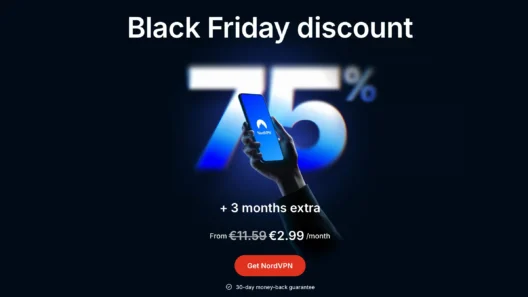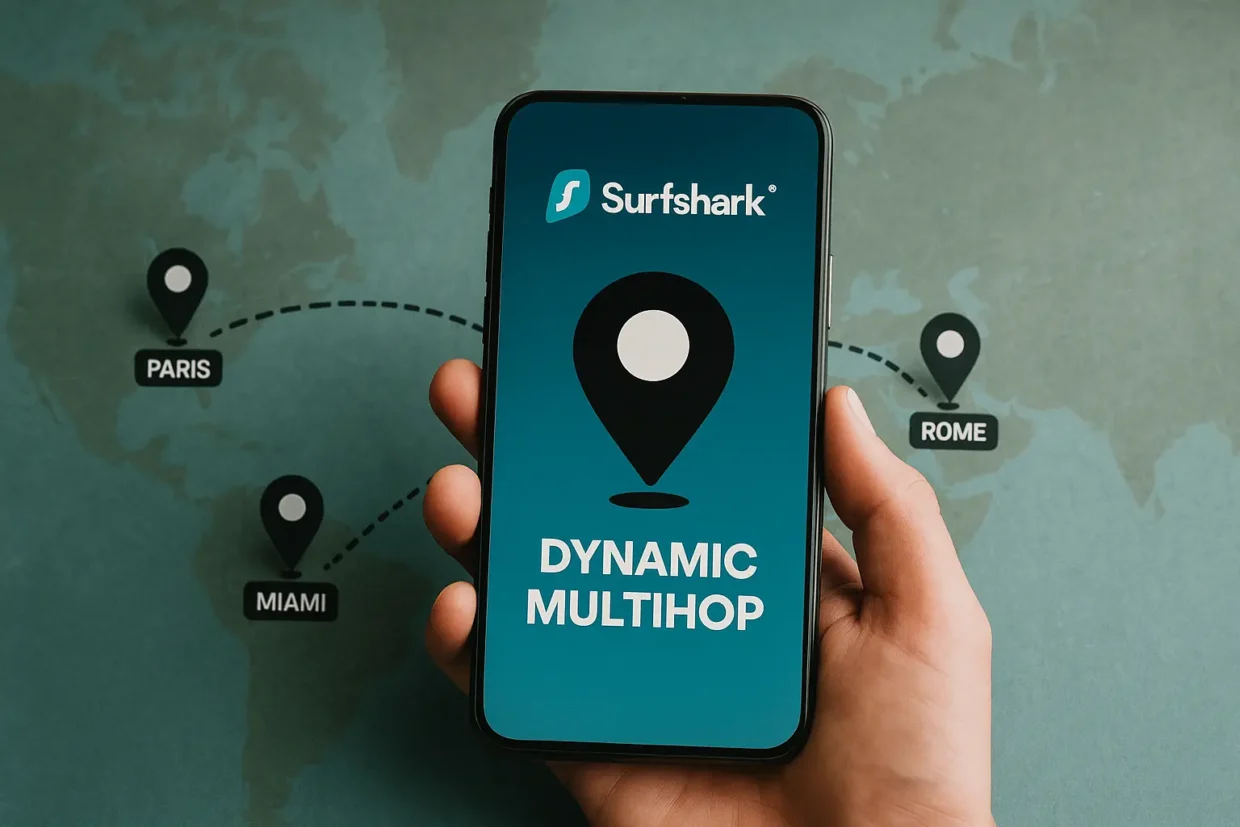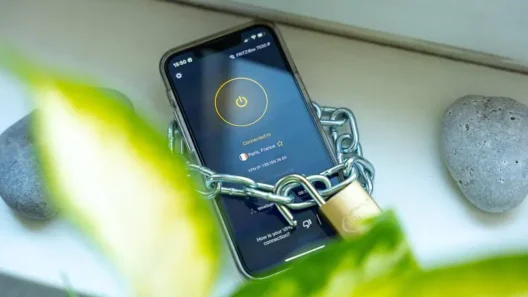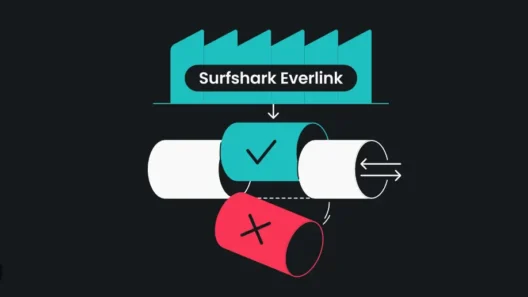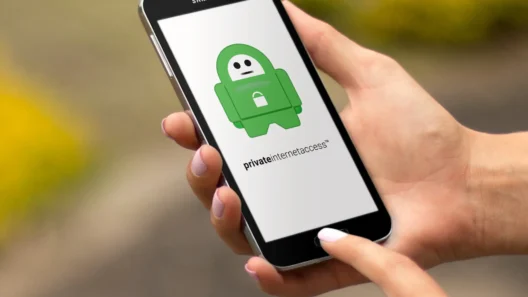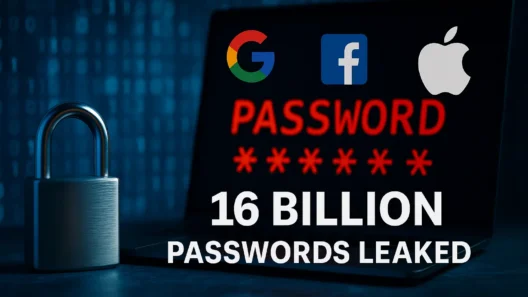Ever feel like using just one VPN server isn’t cutting it anymore? Like your data could still slip through the cracks if someone really wanted to trace you? Yeah, I’ve been there too. That’s exactly why I started playing around with Surfshark’s MultiHop feature and spoiler alert – it’s not just another marketing gimmick. This thing actually gives you an extra privacy layer that most VPNs don’t even touch.
MultiHop (also known as Double VPN) basically routes your traffic through two different VPN servers instead of one. So let’s say you’re in the US. Normally, your connection would go straight from your device to, say, a server in Germany, and boom – that’s your new IP.
But with MultiHop, it might first go through a server in the UK and then bounce to Germany, or even do a U-turn and exit somewhere totally different. It’s like wearing sunglasses and a hoodie at the same time – online.
But it’s not just about hiding better. It also helps with censorship, local ISP throttling, and even beating certain VPN blocks that single connections struggle with.
👉 Get Surfshark with up to 87% off + 2 months FREE
What is Surfshark MultiHop and who should care?
Let’s break it down without the fluff. MultiHop in Surfshark is a built-in feature that lets you connect through two servers in two different countries. It’s designed for:
- People who want max privacy (journalists, activists, or just cautious folks like me)
- Bypassing censorship in high-surveillance countries
- Getting around aggressive firewalls or VPN blocks
- Users accessing sensitive stuff – crypto exchanges, private portals, or whistleblower sites
And before you ask – yes, it still works with Netflix, Hulu, and all that good stuff. Surfshark keeps those connections stable even when they’re bouncing through two countries.
Here’s a quick look at what MultiHop does vs regular VPN:
| Regular VPN | MultiHop (Surfshark) | Why It Matters |
|---|---|---|
| Connects via one server | Routes via two different servers | Double encryption + IP obfuscation |
| One IP address | Changes IP twice | More resistant to tracking |
| Good for everyday use | Better for sensitive situations | Ideal for countries with censorship |
Setting up MultiHop in Surfshark (Step-by-step with screenshots)
Now let’s get practical. Setting it up takes literally under 60 seconds once you get the hang of it. Here’s exactly how I do it on macOS, and it’s pretty much the same on Windows too.
Step 1: Open Surfshark and go to “MultiHop”
Once you launch Surfshark, you’ll see a menu on the left. Click the shield icon and then hit the MultiHop tab.
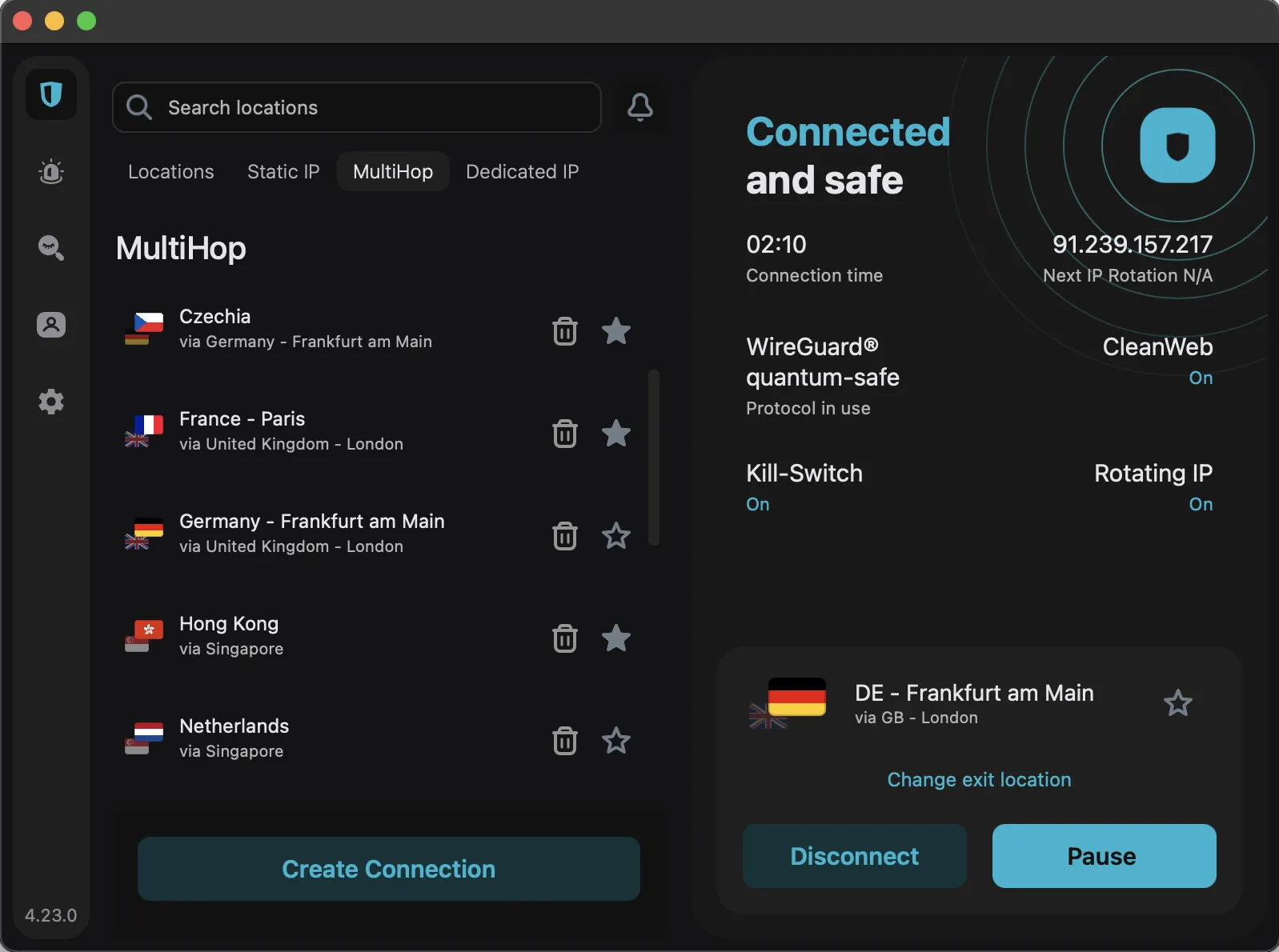
You’ll see a list of pre-configured MultiHop routes like:
- Germany via UK
- France via UK
- Czechia via Germany
- Netherlands via Singapore
You can use one of those, or create your own combo if you’re feeling fancy.
Step 2: Create a custom MultiHop route
Click the big blue button that says Create Connection. This will take you to a two-step setup where you choose:
- Entry location (your first VPN server)
- Exit location (your final destination)
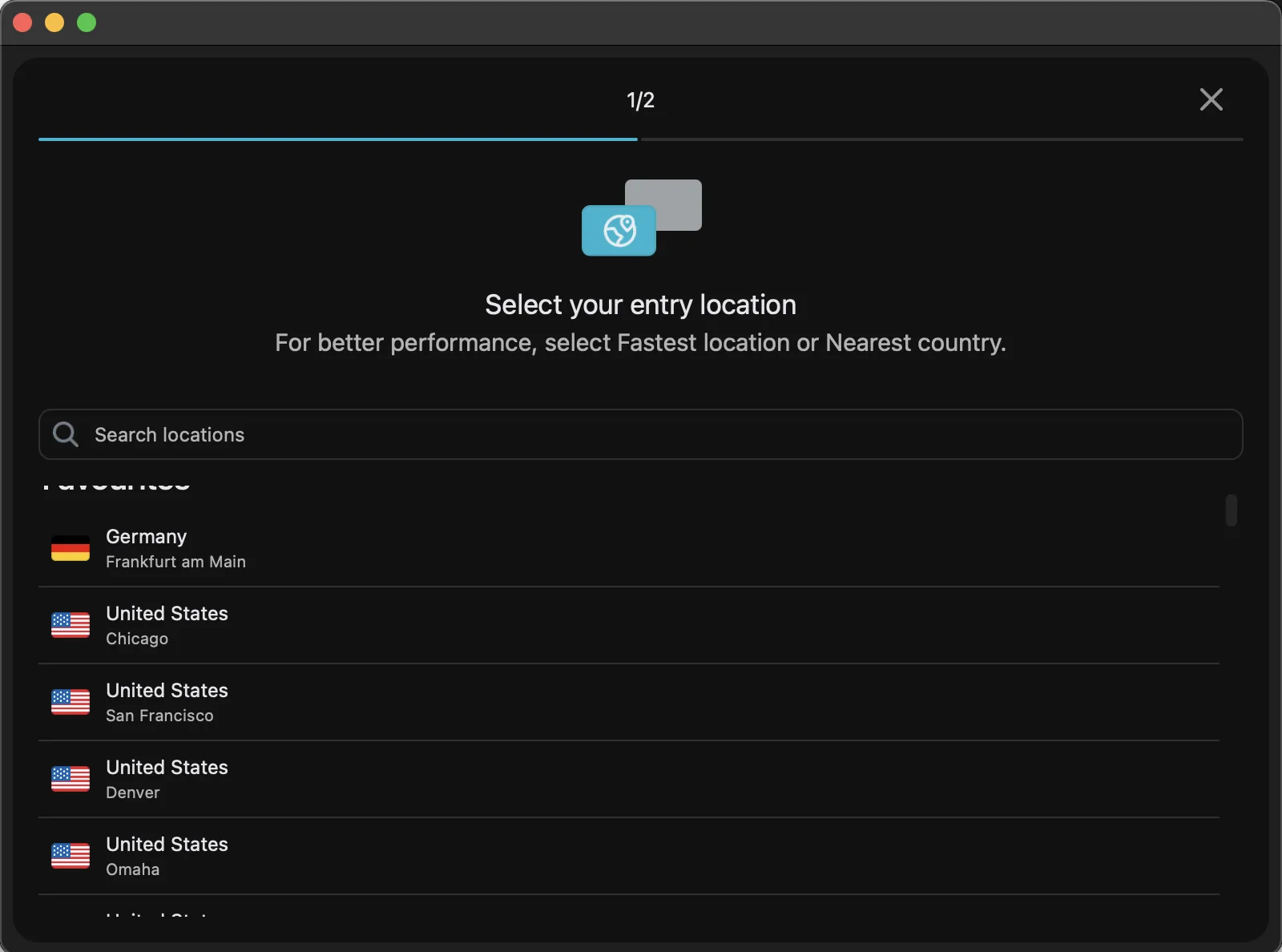
Start by picking your entry point. I usually go for something geographically close for better speeds – like Frankfurt or London if I’m in Europe, or Chicago if I’m in the States.
Then you pick your exit point. This is the server that websites will actually see as your location.
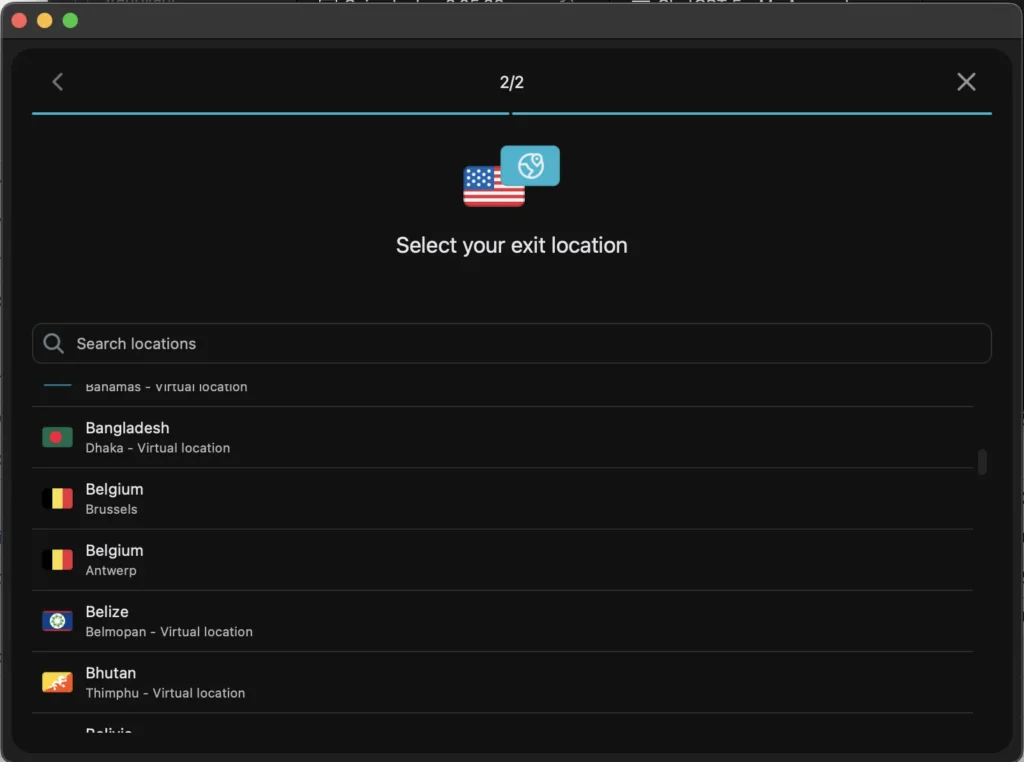
In this example, I went from USA (Boston) to Belgium (Brussels).
Step 3: Confirm and connect
Once you’ve picked your entry and exit locations, Surfshark shows a little summary screen confirming your setup. You’ll see both flags – your first server (e.g. US) and your final exit (e.g. Belgium) – side by side.
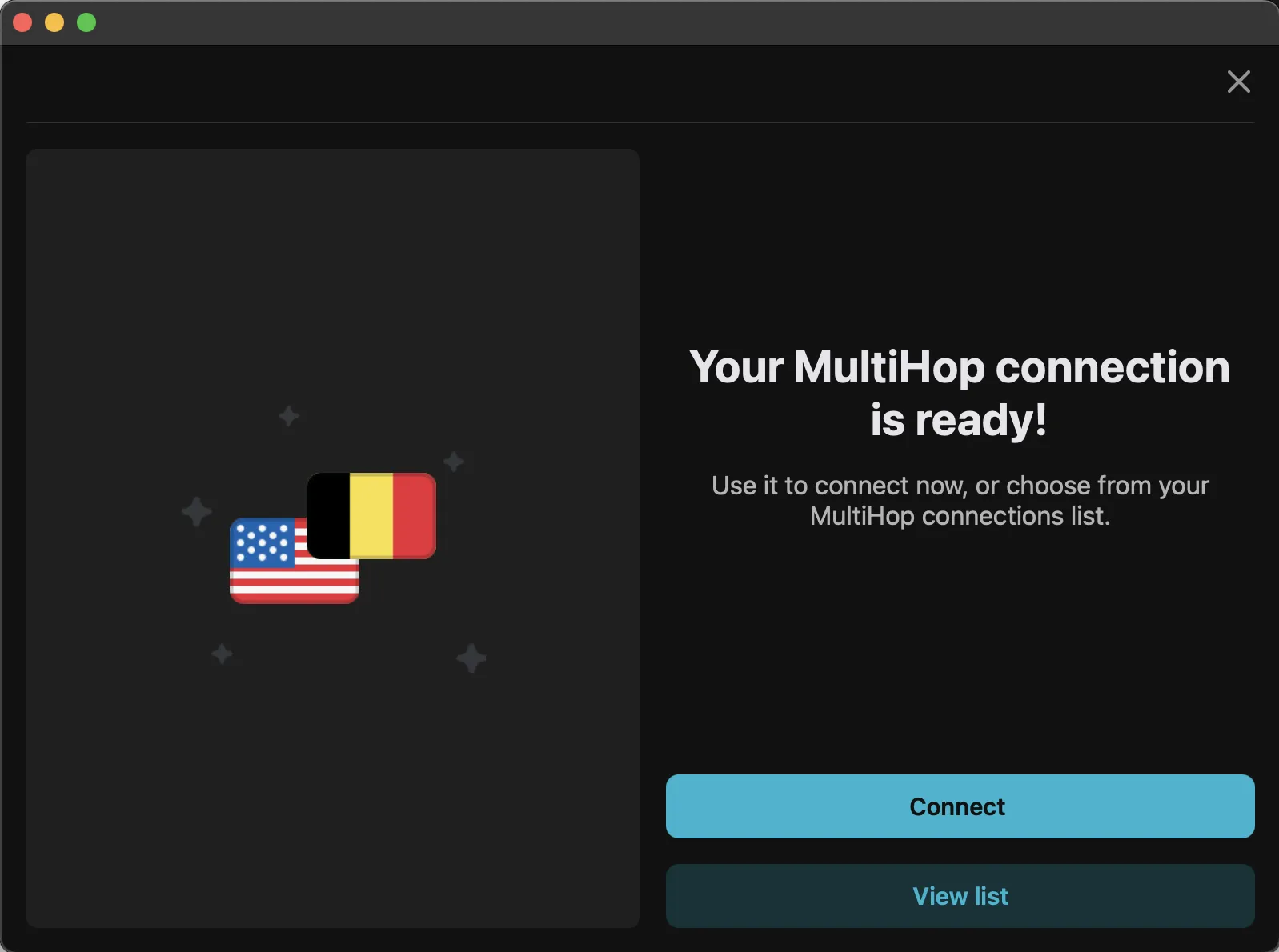
Just hit Connect, and you’re live.
Boom. Your internet traffic now bounces through two encrypted VPN servers in two different countries. Good luck to anyone trying to trace that.
Step 4: Confirm you’re connected – and safe
After connection, the right-hand panel in Surfshark shows all the details: connection time, your temporary IP address, which protocol you’re using (like WireGuard), and extra features like CleanWeb and Kill Switch.
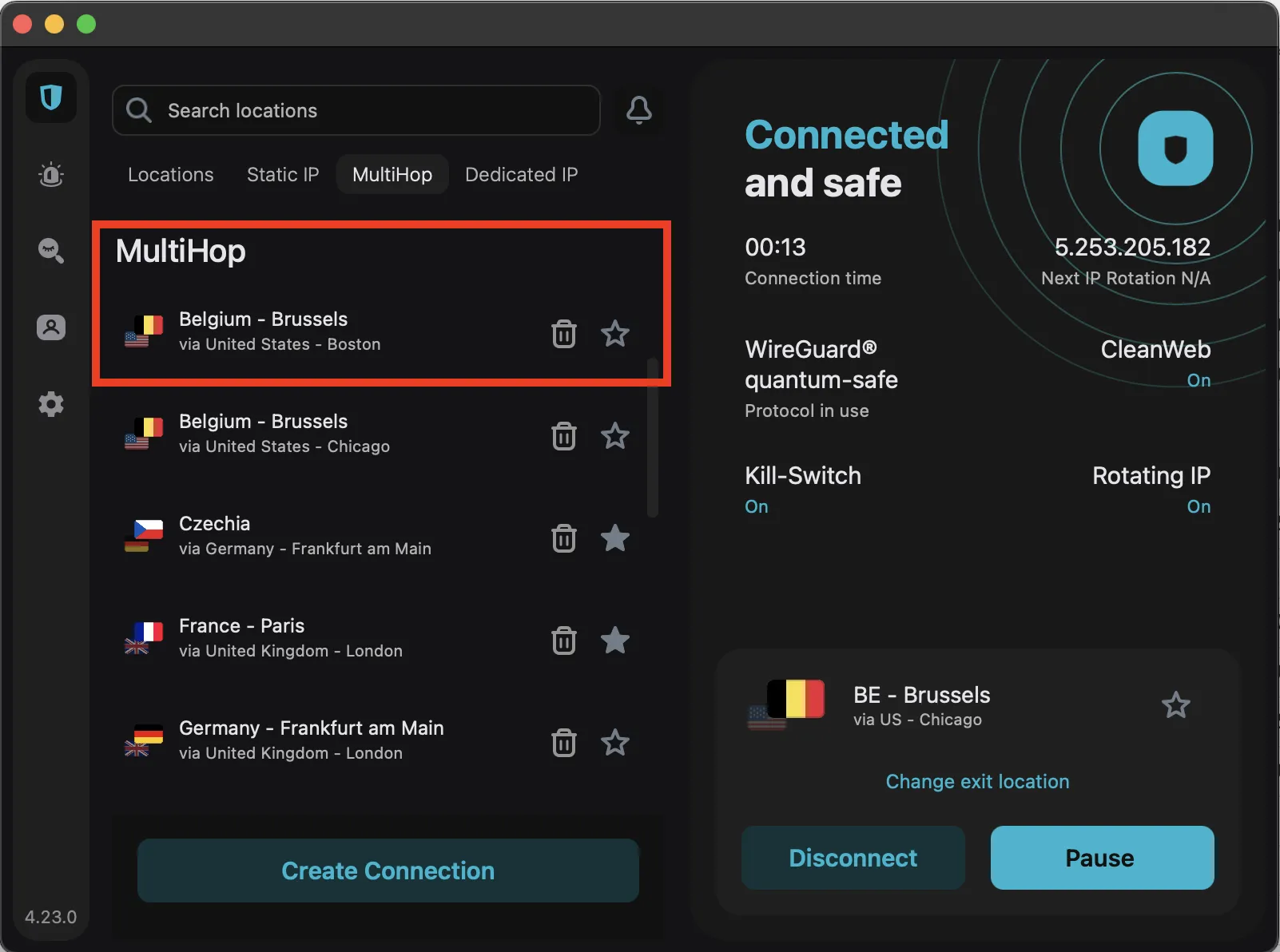
You’ll also see the “Connected and safe” message at the top, which means everything’s working as it should. If you ever want to pause the connection or change the exit server, it’s just one click.
Does MultiHop slow down your connection?
Short answer: yeah, a bit – but it’s totally manageable.
You’re basically adding another leg to your trip, so it’s like going from New York to London via Iceland instead of direct. But if you pick smart server combos, the difference isn’t huge. I’ve tested routes like:
- Frankfurt → London
- Chicago → Brussels
- Paris → London
…and most of them give me speeds fast enough for HD streaming, Zoom calls, and even online gaming.
Here’s a rough look at the impact from my own tests:
| Route | Avg Download Speed | Ping (ms) |
|---|---|---|
| Germany → UK | 180 Mbps | 45 ms |
| Chicago → Brussels | 120 Mbps | 80 ms |
| Netherlands → Singapore | 90 Mbps | 160 ms |
So yeah – if you’re going from Europe to Asia, expect more latency. But for regular routes within Europe or US → EU, it’s surprisingly smooth.
Why I actually use MultiHop (real use cases)
I’ll be honest, I don’t use MultiHop 24/7. But there are some situations where I always turn it on:
- Logging into banking apps from abroad
Ever had your bank freak out because you signed in from a foreign IP? MultiHop helps here. I enter through my home country and exit through a trusted country – and boom, no red flags. - Accessing geo-blocked content
Some streaming services are stricter than others. MultiHop sometimes helps bypass stubborn geo-blocks – especially if your normal VPN route is blacklisted. - Researching sensitive topics
Whether it’s political news, crypto stuff, or just stuff you don’t want tied to your IP – MultiHop keeps things buried deeper. - Public Wi-Fi in sketchy places
Airports, cafés, or even hotels – I don’t trust any of them. With MultiHop on, I know my connection is encrypted twice, so I’m not sweating it.
Protocols, encryption & features that make it work
Here’s what’s running under the hood when you use MultiHop with Surfshark:
- WireGuard® protocol
Lightning fast and secure. It’s what I always choose unless I have a specific reason to switch. - AES-256-GCM encryption
Basically military-grade — even if someone intercepts your data, they can’t do squat with it. - CleanWeb
Built-in ad and tracker blocker. Kicks in even with MultiHop turned on. - Kill Switch
Automatically cuts your internet if the VPN connection drops — avoids leaks. - Rotating IP
Optionally gives you a new IP at regular intervals, even while connected.
Surfshark made it super simple to have all this running without needing a tech degree. I turn it on and forget about it until I need to dig into the logs or adjust my server path.
When should you use MultiHop and when you probably don’t need it
Alright, so you’ve got this powerful feature at your fingertips. But let’s be real — you don’t always need to go full Jason Bourne with your VPN setup.
Here’s my honest take:
Use MultiHop when:
- You’re in a country with heavy censorship (China, Russia, Iran, UAE, etc.)
- You’re dealing with sensitive personal data (finance, crypto, activism)
- You want extra protection on public Wi-Fi
- You suspect your regular VPN route is getting blocked or throttled
- You’re accessing restricted content in countries where VPN use is flagged
You probably don’t need MultiHop if:
- You’re just streaming Netflix or YouTube from another country
- You’re trying to get better speeds (MultiHop adds some latency)
- You want the simplest and fastest VPN experience
And that’s fine. The cool thing is Surfshark gives you both. You can run standard connections most of the time and just switch on MultiHop when you need that extra cloak.Want to vanish online like a ghost? This full guide shows you how to set up MultiHop in Surfshark — double IP protection, custom routes, and total digital freedom in just a few clicks.
Picking the best entry & exit locations
One of the most important things you can do to make MultiHop work better (and faster) is to pick smart server pairs. Here’s what I’ve learned:
1. Keep your entry server close to home
If you’re in Europe, pick Frankfurt, Paris, or London. In the US? Try New York, Chicago, or Boston. Close = lower latency.
2. Pick an exit server that fits your goal
- Want to browse like you’re in the EU? Exit through Brussels or Prague.
- Trying to unblock US streaming? Go through San Francisco or New York.
- Want max privacy? Pick a country with strong data laws like Switzerland or Iceland.
3. Avoid long-haul combos unless you have to
Singapore → Amsterdam sounds cool on paper, but it might kill your speed. I use those only when I need to bypass specific country-level filters.
Final thoughts (and how to get Surfshark with a discount)
MultiHop isn’t something everyone needs all the time – but when you do, you’ll be glad you have it. It’s like having an “incognito mode” that actually works, not just a private browser tab.
Surfshark makes it insanely easy to use, and it’s baked right into the app – no upgrades, no add-ons, no confusing setups. You just tap, choose your two countries, and you’re protected on a whole other level.
If you want to try it out yourself (or upgrade from a basic VPN), Surfshark’s running a deal right now:
Totally worth it – especially if you care about privacy and want one of the most flexible VPN setups out there.
TL;DR: MultiHop in Surfshark – The Real Deal
- Routes your connection through two VPN servers in two countries
- Adds double encryption and extra privacy
- Helps bypass censorship, trackers, VPN blocks
- Works great with WireGuard, Kill Switch, and CleanWeb
- Easy to set up in under a minute
- Best for power users, journalists, crypto traders, expats, and cautious folks







